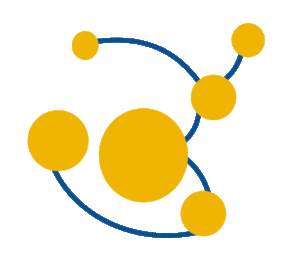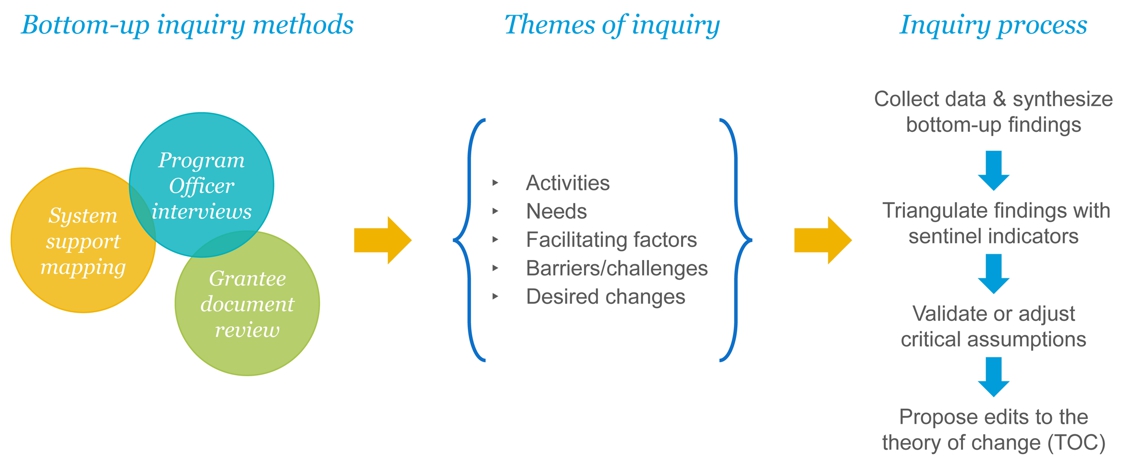 Bottom-Up Inquiry
Bottom-Up Inquiry
How and why are changes happening (or not happening)?
Bottom-up inquiry uses mostly participatory, qualitative data collection techniques that aim to identify and unpack the complex mechanisms of change and interconnections between interventions, the context and the actors involved to better understand how and why changes are happening and emergent factors that may influence future planning and programs. Specific methods include:
- System Support Mapping (SSM) is a novel data collection method drawing on the literature of systems science. SSM is designed to guide grantees and stakeholders through assessing the implementation of program activities and the contextual factors that influence their performance in a systematic manner. This activity aims to generate implementation and context-related data and themes and identify issues of stakeholder coordination. SSM can be used both as a retrospective process for analysis and reflection as well as a prospective process for planning purposes.
- Interviews with BMGF Program Officers (POs) are conducted quarterly, and are guided by a structured interview guide.
- Systematic document review is conducted on an ongoing basis to provide synthesis of what is happening across the portfolio, help to inform the PO question guide with timely and relevant themes as well as to provide background information for SSM data collection and identify new sources of data.
Bottom-up inquiry process and outcomes

